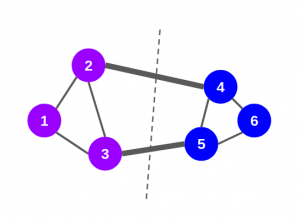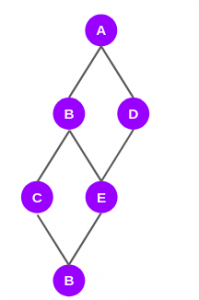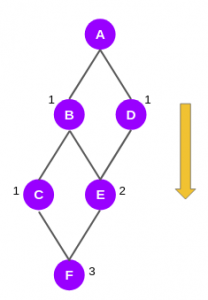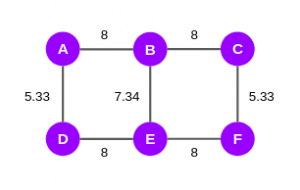Introduction
Networks surround us, perhaps in the form of your favorite social media hubs: Facebook, Instagram, Twitter, or the intricate web of stock exchanges where buying and selling intertwine. But networks don’t just thrive in technology; they’re woven into our daily lives. Communities are the heartbeat of these networks, where clusters of closely connected nodes form distinct groups. Picture your social sphere on platforms like Facebook or Instagram – interactions with friends, colleagues, and family – a tight-knit community within the digital world. Join us on an expedition into the realm of community detection, where hidden patterns shape our interconnected world.
Table of contents
What is a Community?
A community, with respect to graphs, can be defined as a subset of nodes that are densely connected to each other and loosely connected to the nodes in the other communities in the same graph.
Think about social media platforms such as Facebook, Instagram, or Twitter, where we try to connect with other people. Eventually, after a while, we end up being connected with people belonging to different social circles. These social circles can be a group of relatives, school mates, colleagues, etc.
These social circles are nothing but communities!
Also Read: Think in Graphs: Introduction to Graph Theory and its Applications using Python
What is Community Detection?
Community detection methods locate communities based on network structure, such as strongly connected groupings of nodes; however, they often ignore node properties. Nodes of similar types form a community in a network. Intra-community edges are the edges that connect the nodes in a community.
Detecting communities in a network is one of the most important tasks in network analysis. In a large scale network, such as an online social network, we could have millions of nodes and edges. Detecting communities in such networks becomes a herculean task.
Therefore, we need community detection algorithms that can partition the network into multiple communities.
Types of Community Detection
There are primarily two types of methods for detecting communities in graphs:
- Agglomerative Methods
- Divisive Methods
Agglomerative Methods
In agglomerative methods, we start with an empty graph that consists of nodes of the original graph but no edges. Next, the edges are added one-by-one to the graph, starting from “stronger” to “weaker” edges. This strength of the edge, or the weight of the edge, can be calculated in different ways.
Divisive Methods
In divisive methods, we go the other way round. We start with the complete graph and take off the edges iteratively. The edge with the highest weight is removed first. At every step, the edge-weight calculation is repeated, since the weight of the remaining edges changes after an edge is removed. After a certain number of steps, we get clusters of densely connected nodes.
In this article, we will cover the Girvan-Newman algorithm – an example of the divisive method.
Girvan-Newman Algorithm for Community Detection
Under the Girvan-Newman algorithm, the communities in a graph are discovered by iteratively removing the edges of the graph, based on the edge betweenness centrality value.
The edge with the highest edge betweenness is removed first. We will cover this algorithm later in the article, but first, let’s understand the concept of “edge betweenness centrality”.
Edge Betweenness Centrality (EBC)
The edge betweenness centrality (EBC) can be defined as the number of shortest paths that pass through an edge in a network. Each and every edge is given an EBC score based on the shortest paths among all the nodes in the graph.
With respect to graphs and networks, the shortest path means the path between any two nodes covering the least amount of distance. Let’s take an example to find how EBC scores are calculated. Consider this graph below:
EBC Scores
It has 6 nodes and 7 edges, right? Now, we will try to find the EBC scores for all the edges in this graph. Note that it is an iterative process and I’ve given an outline of it here:
- We will take one node at a time and plot the shortest paths to the other nodes from the selected node
- Based on the shortest paths, we will compute the EBC scores for all the edges
- We need to repeat this process for every node in the graph. As you can see, we have 6 nodes in the graph above. Therefore, there will be 6 iterations of this process
- This means every edge will get 6 scores. These scores will be added edge-wise
- Finally, the total score of each edge will be divided by 2 to get the EBC score
Now, let’s start with node A. The directly connected nodes to node A are nodes B and D. So, the shortest paths to B and D from A are AB and AD respectively:
It turns out that the shortest paths to nodes C and E from A go through B and D:
The shortest paths to the last node F from node A, pass through nodes B, D, C, and E:
The graph above depicts only the shortest paths from node A to all the other nodes. Now we will see how edges are scored.
Before giving scores to the edges, we will assign a score to the nodes in the shortest-path-graph. To assign these scores, we will have to traverse the graph from the root node, i.e., node A to the last node (node F).
Assigning Scores to Nodes
As you can see in the graph above, nodes B and D have been given a score of 1 each. This is because the shortest path to either node from node A is only one. For the very same reason, node C has been given a score of 1 as there is only one shortest path from node A to node C.
Moving on to node E. It is connected to node A through two shortest paths, ABE and ADE. Hence, it gets a score of 2.
The last node F is connected to A through three shortest paths — ABCF, ABEF, and ADEF. So, it gets a score of 3.
Computing Scores for Edges
Next, we will proceed with computing scores for the edges. Here we will move in the backward direction, from node F to node A:
Step 1
We first compute the score for the edges FC and FE. The edge score for edge FC is the ratio of the node scores of C and F, i.e. 1/3 or 0.33. Similarly, for FE the edge score is 2/3.
Step 2
Now we have to calculate the edge score for the edges CB, EB, and ED. According to the Girvan-Newman algorithm, from this level onwards, every node will have a default value of 1 and the edge scores computed in the previous step will be added to this value.
So, the edge score of CB is (1 + 0.33)/1. Similarly, edge score EB or ED is (1 + 0.667)/2.
Step 3
Then we move to the next level to calculate the edge scores for BA and DA.
So far, we have computed the edge scores of the shortest paths with respect to node A. We will have to repeat the same steps again from the other remaining five nodes. In the end, we will get a set of six scores for all the edges in the network. We will add these scores and assign them to the original graph as shown below:
Step 4
Since it is an undirected graph, we will divide these scores by two and finally, we will get the EBC scores:
According to the Girvan-Newman algorithm, after computing the EBC scores, the edges with the highest scores will be taken off till the point the graph splits into two. So, in the graph above, we can see that the edges AB, BC, DE, and EF have the highest score, i.e., 4. We will strike off these edges and it gives us 3 subgraphs that we can call communities:
If you prefer learning all of this in video form, this will help you out:
Implementing the Girvan-Newman Algorithm for Community Detection in Python
I will use Zachary’s karate club Graph to demonstrate how you can perform community detection using the Girvan-Newman Algorithm.
Zachary’s karate club is a social network of a university karate club. The network became a popular example of community structure in networks after its use by Michelle Girvan and Mark Newman in 2002.
We will start off with loading the required libraries: networkx and matplotlib:
The Karate Club graph comes pre-installed with the networkx library. So, we can easily import it:
len(G.nodes), len(G.edges)
Output: (34, 78)
It turns out that the graph has 34 nodes and 78 edges. This is a pretty small-sized graph. Usually, real-world graphs could easily be a thousand times bigger than this graph. But we’ll go ahead with this graph for the purpose of this tutorial.
Now, we know that in the Girvan-Newman method, the edges of the graph are eliminated one-by-one based on the EBC score. So, the first task is to find the EBC values for all the edges and then take off the edge with the largest value. The below function performs the exact task:
Now the function below will use the above function to partition the graph into multiple communities:
Next, let’s pass the Karate Club graph to the above function:
node_groups
Output: [[0, 1, 3, 4, 5, 6, 7, 10, 11, 12, 13, 16, 17, 19, 21],
[32, 33, 2, 8, 9, 14, 15, 18, 20, 22, 23, 24, 25, 26, 27, 28, 29, 30, 31]]
These are the node sets belonging to two communities in the Karate Club graph according to the Girvan-Newman algorithm. Let’s use these node sets to visualize the communities discovered in the graph:
Conclusion
In this article, we discussed graph theory and community detection. We focused on the Girvan-Newman algorithm for community identification and its implementation using Python. Explore other clustering methods used in data science with our Blackbelt Plus program. We offer a diverse curriculum with projects, assignments, and mentorship sessions to make your learning journey exclusive. Join the program today!
Frequently Asked Questions
A. In social networks, community detection involves identifying groups of nodes that share stronger connections within themselves compared to connections with nodes outside the group. It uncovers inherent structures, revealing clusters of related individuals or entities within the network.
A. Various methods exist for community detection, including the Girvan-Newman algorithm, the Louvain method, and spectral clustering. These methods analyze network structures to identify densely connected groups, offering insights into relationships and patterns.
A. Community detection in clustering refers to the identification of cohesive subsets within data points. It aligns with the concept of finding groups or clusters that are densely interconnected. This technique proves particularly useful in domains like social network analysis and data segmentation.
A. In data science, community detection refers to practicing the unveiling of meaningful groups within complex datasets. It’s used to identify patterns, relationships, and clusters in diverse data types, aiding in understanding data structures and informing decision-making processes.

















